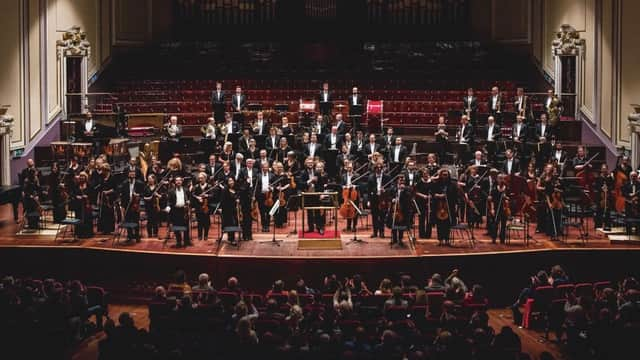How Scotland’s orchestras are planning for life after lockdown


Slowly, cautiously, orchestras are beginning their post-Covid-19 re-emergence. Several European ensembles – including the Berlin Philharmonic – have offered socially distanced, chamber-sized concerts for online consumption, in what feel like try-outs for the kind of events we might be in for over the next – well, who knows how long? Not surprisingly, Scottish orchestras are actively modelling possibilities too.
Both the RSNO and the SCO launched their 2020-21 seasons shortly before Covid-19 kicked in. Where do things stand now? Both orchestra’s chief executives are pragmatic. “I think they have to stay there as an aspiration,” explains the RSNO’s Alistair Mackie, “but there has to be an acceptance that we probably can’t perform exactly what we’ve advertised.”
Advertisement
Hide AdAdvertisement
Hide AdGavin Reid at the SCO remains hopeful that at least some of his orchestra’s next season can go ahead as planned. “But of course we’re realists, and we have to plan for the possibility of doing something else.The SCO is a chamber orchestra, but it’s also a group of chamber musicians, or of soloists, and it can be a string ensemble or a wind ensemble, so we have that flexibility should we need it.”
The heads of Scotland’s three large-scale professional orchestras have all been planning multiple possible scenarios to respond to what’s an uncertain and fast-moving situation. At the BBC SSO, director Dominic Parker has the added complication of radio broadcasts. “Stage one of a return for us is to get back into the recording studio, to feed Radio 3 with some live music. The stage after that is to be able to stream more music online – we want to be able to connect visually with an audience. After that, we’re hoping to play to reduced audiences, then with a full orchestra, and finally with a full orchestra and a full audience. But the speed at which we move through those stages we just don’t know.”
Reid is realistic, too, that not everything being considered will come to fruition. “We’re developing multiple scenarios, which could include small events very local to where audiences live, or could be using technology. Some of those may end up just as interesting ideas on paper, but others might well be our lifeline in the weeks and months to come.”
There are, however, inevitable barriers for orchestras to overcome, at many different levels. Parker has been considering them in detail. “There are questions of players wearing face masks, fabric over the bells of brass instruments to stop the water vapour coming out, wind players no longer able to tap the water from their instrument onto the floor, obviously distancing between players and no sharing of music stands, therefore smaller orchestras, and repertoire for smaller ensembles. Then there are possible one-way systems for audiences going in and out, hand sanitisers being available, clear cleaning routines, possibly shorter concerts without intervals to minimise queuing at bars and toilets. But the other big question is how confident audiences themselves will be about coming back.”
“To be honest, I’m somewhat sceptical about some of these ideas,” says Mackie. “Even if the government allowed us to have 300 people in a concert, will anyone buy those tickets? And what’s the financial viability in that?”But, strange though it may seem, this is also a time for positivity, a rare period for orchestras to step back and reflect on future strategy. Current restrictions may even breed future creativity. Mackie suggests asking contemporary composers to make slimmed-down versions of orchestral masterpieces, or leaving some of a concert’s repertoire to be discovered on the night. “I think it’s a time to take risks, and I think people will be forgiving in a way they might not have been outside these times.”
Parker continues the theme. “We’ve thought about taking much smaller groups to smaller venues, playing in community locations rather than concert halls. Or even finding an enormous venue where you can fit the full orchestra on a much bigger stage. They’re exciting thoughts. Whether they’re actually deliverable is another thing entirely, but it’s worth challenging convention.”
Digital work is key to all three orchestras’ ideas for the medium-term future, too. But Reid stresses the SCO’s abiding values. “Technology allows us to reach many more people. But our feeling is that the very visceral connection you get from musicians playing in the same room as a live audience, and that intense, personal, shared experience you can only get in the concert hall, those are not going anywhere.”
Advertisement
Hide AdAdvertisement
Hide AdThe Covid-19 crisis has prompted Mackie to think seriously about an orchestra’s fundamental role. “I’d be disappointed if this time didn’t initiate change and propel us forward. I’ve always felt that orchestras need to become more of a community of artists and audiences, less of an entertainment club. I’m certain we’ll be learning from this in terms of what we do in the future. Everyone will benefit from that.”